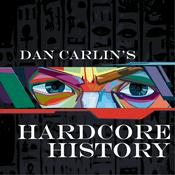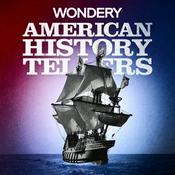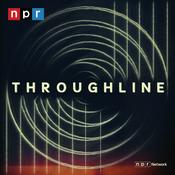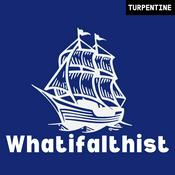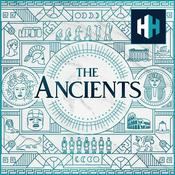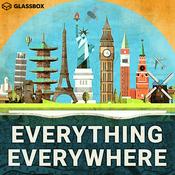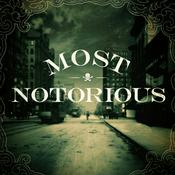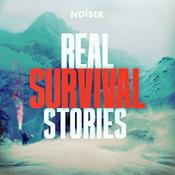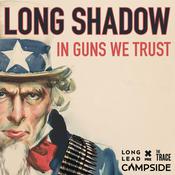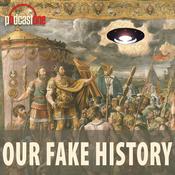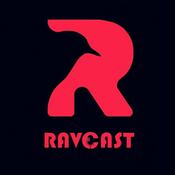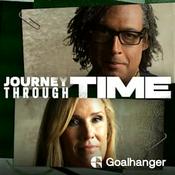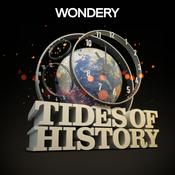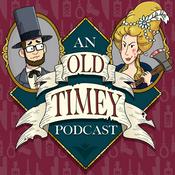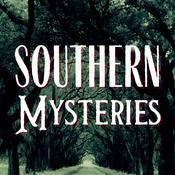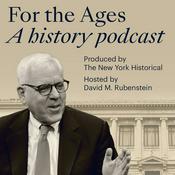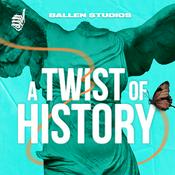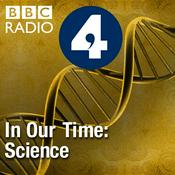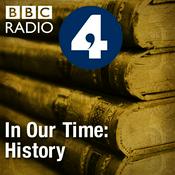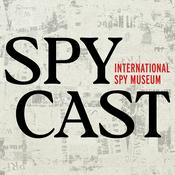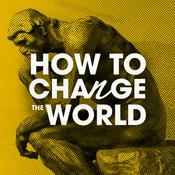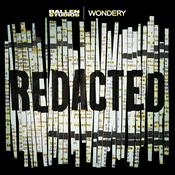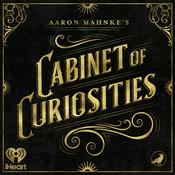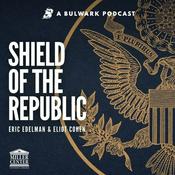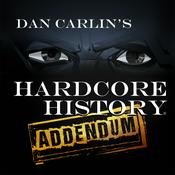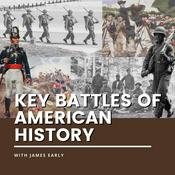208 episodes
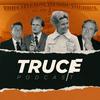
An American Coup in Guatemala
1/06/2026 | 41 mins.
Give to help Chris make Truce Given the recent events in Venezuela, I have decided to run a classic episode from season 3. The question of our era is not "why did we do this?" but "why do we keep doing this?" Why does the United States continue to overthrow other countries? God willing, I'll be back next week with a new episode about Pat Robertson. Discussion Questions: What threat did President Jacobo Arbenz pose to United Fruit? United Fruit owned many utilities in Guatemala from the trains to telephone lines. How would you feel if our utilities were owned by foreign entities? If they controlled our natural resources? Do you think the land reform deal was a good one for their country? Were people like John Foster Dulles right to overthrow Arbenz? How might it have benefited them to do so? In what way could the actions of the US in the 1950s reflect poorly on Christianity domestically and abroad? It has been argued that American consumers benefit when Latin American and African countries are thrown in disarray. It means cheaper diamonds, gold, rubber, and more while also stranding the people in those countries in poverty. Does it bother you that you may be benefiting from unbalanced countries? Do you find the assumption that we are benefiting to be offensive? Why? Is there anything we can do about it? Sources: “Bad Fruit: The Story of the American Coup in Guatemala” by Stephen Schlesinger and Stephen Kinzer CIA Document profiling Arbenz YouTube clips of a documentary on the Guatemalan coup Then-Vice President Nixon talking with Armas after the overthrow Statistics on Fruit Financial Times article about United Fruit Book “One Nation Under God” by Kevin Kruse (for the bio info on the Dulles brothers) Peurifoy’s cable to Washington President Arbenz’s farewell speech List of governments that the US has overthrown New intro sources: CSPAN's coverage of the January 3, 2026, speech given by President Trump The New York Times' coverage of the capture of Maduro The New York Times' coverage of the oil angle Learn more about your ad choices. Visit podcastchoices.com/adchoices

Republicans and Evangelicals: Bill Bright, Campus Crusade, and Cru
12/16/2025 | 53 mins.
Give to help Chris continue to make Truce William R. “Bill” Bright was born in 1921 in Coweta, Oklahoma. Though raised in a religious environment, he initially pursued business success and personal ambition. While attending the University of Southern California, Bright experienced a dramatic spiritual transformation through the influence of Christian leaders like Henrietta Mears. This encounter led him to surrender his life to Jesus Christ and ultimately shaped his calling toward full-time evangelism. In 1951, Bill and his wife, Vonette, founded Campus Crusade for Christ at UCLA with a vision to reach college students with the Gospel. He later developed The Four Spiritual Laws, a simple evangelistic tract that became one of the most widely distributed Christian tools in history. Under his leadership, Campus Crusade grew into a global movement with ministries focused on students, athletes, families, the military, and professionals. Bright also launched the Jesus Film Project in 1979, which became one of the most-translated and widely viewed films in the world. What's missing from most short bios of Bright is the depth of his involvement in the Religious Right. He organized or was present at some of their key gatherings, founded a publishing house to print their words, and raised funds among them. Bill Bright remained dedicated to fulfilling the Great Commission, often engaging in long periods of fasting and prayer for spiritual guidance. He received the prestigious Templeton Prize in 1996 for his contributions to religion and reinvested the award into Christian ministry. When he died in 2003, Campus Crusade for Christ had expanded into nearly every nation, with thousands of staff and volunteers sharing the Gospel worldwide. Bright’s life stands as a testament to the global impact one person can have through faith, vision, and relentless obedience to God’s call. My guest for this episode is historian John G. Turner, author of Bill Bright and Campus Crusade for Christ: The Renewal of Evangelicalism in Postwar America. Sources: Bill Bright and Campus Crusade for Christ: The Renewal of Evangelicalism in Postwar America by John G. Turner The Evangelicals by Frances Fitzgerald Reaganland by Rick Perlstein God as Capitalist: Seminar Promotes Religion and Riches by Russell Chandler. Los Angeles Times (1923-1995); Jun 1, 1981; starts on page B3. Accessed via ProQuest (thanks to the Teton County Library for access!) Tract: The Four Spiritual Laws The Politics of Rage by Dan T. Carter The Invisible Bridge by Rick Perlstein Before the Storm by Rick Perlstein God's Own Party by Daniel K. Williams One Nation Under God by Rus Walton (page numbers mentioned in the episode correspond to the 1993 paperback edition). I also used the 1987 version from archive.org Birchers by Matthew Dallek In the Spirit of '76, published by Third Century Publishers Inc. Jimmy Carter, the Politics of Family, and the Rise of the Religious Right by J. Brooks Flippen The 700 Club's coverage of the "Washington for Jesus Rally" Also, my guest, Dave Hopping, used to be in the comedy duo "Dave and Brian". They were pretty big! Here is one of their videos. Discussion Questions: Have you read The Four Spiritual Laws? How has Campus Crusade/ Cru impacted your life? The life of your loved ones? What threats did Bright perceive to American Christians? Where was he right? Where was he wrong? What did you think of Rus Walton's book One Nation Under God? Was Bright part of the Religious Right? To what degree? Learn more about your ad choices. Visit podcastchoices.com/adchoices

Republicans and Evangelicals I Jerry Falwell (part 2)
12/02/2025 | 36 mins.
Give to help Chris make more Truce The New Right had a plan--to bring evangelical Christians together as a voting bloc. But how to do that? They chose a few targets, people with big followings, and courted them. Jerry Falwell was an obvious choice. He was a fundamentalist preacher, televangelist, and the founder of Liberty University. He also had a propensity for the dramatic, seeing the end of days around every corner. The New Right did not like President Jimmy Carter and did their best to turn evangelicals against him. A big job considering that Carter was an evangelical and often talked about his faith. Still, they wanted Ronald Reagan (a divorced actor with a reputation with the ladies) to be their man. In this episode, Chris is joined by author and historian Rick Perlstein. Sources Reaganland by Rick Perlstein article about Reinhold Niebuhr God's Own Party by Daniel K. Williams The Evangelicals by Frances Fitzgerald Listen, America! by Jerry Falwell Discussion Questions What was the role of the New Right in recruiting religious people? Why was Falwell an ideal candidate for the New Right? A higher percentage of evangelicals voted for Nixon than for Reagan. So why do we talk so much about Reagan as a turning point? What was the Moral Majority? How do we see groups like them operating today? Learn more about your ad choices. Visit podcastchoices.com/adchoices

Republicans and Evangelicals I Jerry Falwell (part 1)
11/18/2025 | 40 mins.
Give to help Chris make Truce Jerry Falwell was a prominent American pastor, televangelist, and conservative political activist whose life and ministry had a significant impact on American evangelicalism and politics. Born on August 11, 1933, in Lynchburg, Virginia, Falwell grew up in a family that was not particularly religious. However, after becoming a Christian during his college years, he dedicated his life to ministry. He attended Baptist Bible College in Missouri, where he developed the theological convictions that would shape his future work. In 1956, at the age of 22, he returned to his hometown to found the Thomas Road Baptist Church, beginning his long journey as a spiritual and cultural leader. Falwell’s ministry expanded rapidly through the use of media. He launched the “Old-Time Gospel Hour” television program, which gained national attention and allowed him to reach millions of viewers. His style combined traditional evangelical preaching with a strong emphasis on conservative values. The success of his broadcast ministry helped him establish a broad base of support and financial backing, enabling the growth of both his church and other initiatives. By the 1970s, Falwell had become one of the most recognizable faces of American evangelicalism. In 1971, Falwell founded Liberty University in Lynchburg. Perhaps Falwell’s most politically influential move came in 1979 with the founding of the Moral Majority, an organization that mobilized conservative Christians to become involved in American politics. Through the Moral Majority, Falwell encouraged evangelicals to support Republican candidates who aligned with their views on issues like abortion, school prayer, and family values. The group played a crucial role in the election of Ronald Reagan in 1980, signaling a new era of religious involvement in American political life. Falwell's efforts helped to solidify the alliance between evangelical Christians and the Republican Party that persists to this day. Falwell’s outspoken views often sparked controversy. He was a staunch opponent of abortion, LGBTQ rights, and the feminist movement, and he frequently spoke out against what he saw as the moral decline of American society. Critics accused him of promoting intolerance and mixing religion with politics in divisive ways. Nevertheless, his supporters praised him for standing up for biblical principles and being unafraid to speak his mind in a secularizing culture. Falwell saw himself as a defender of traditional American and Christian values, even as the country grew increasingly polarized. Jerry Falwell died on May 15, 2007. My guest for this episode is Daniel K Williams, author of God's Own Party. Sources: God's Own Party by Daniel K Williams American Sermons: The Pilgrims to Martin Luther King Jr. (for the Danforth sermon) I first heard the Danforth sermon mentioned on the Now and Then podcast The Evangelicals by Frances Fitzgerald Falwell: An Autobiography by Jerry Falwell Falwell's "Ministers and Marchers" sermon Discussion Questions What do you think of Danforth's sermon? Why is it important to understand that preachers have been concerned about the US since before it became a country? Why is it valuable to understand Falwell's early opposition to integration? We know that much of the season is related to education. Why is it significant that Falwell was an educator? How should we as a society adapt when a leader repents of their racism? What role did Frances Schaeffer play in shaping Falwell? Learn more about your ad choices. Visit podcastchoices.com/adchoices

Republicans and Evangelicals: Abortion
11/04/2025 | 47 mins.
Give to help Chris continue to make Truce A lot of evangelicals are now single-issue voters, and that issue is abortion. But that was not always the case. In fact, for a great deal of American history, abortion was largely seen as a Catholic issue. There are, of course, exceptions. But most evangelicals and Protestants were divided on the subject, even favoring abortion when it came to preserving the health of the mother, or in cases of rape and incest. On this episode, Chris interviews historian and author Daniel K. Williams about the history of the abortion debate in the United States. A major turning point was the availability of elective or "on-demand" abortions in places like New York. As evangelicals grew more upset with the moral decline of the country, they lumped abortion together with gay and lesbian rights fights, the proliferation of pornography, and decided that it needed to stop. Plus, big money through New Right PACs entered the field, and politicians were soon chosen on their allegiance to pro-life legislation. Sources: Defenders of the Unborn: The Pro-Life Movement before Roe v. Wade by Daniel K Williams Reaganland by Rick Perlstein The Evangelicals by Frances Fitzgerald Romper Room on YouTube CBS Sunday Morning excellent story on Sherri Chessen Article on thalidomide Oyez.org for the Supreme Court cases Church History in Plain Language by Bruce Shelley American Experience article on Comstock Laws New York Times video on the Population Bomb (good stuff!) The US Constitution Frances Shaeffer and the Shaping of Evangelical America by Barry Hankins Discussion Questions: Why was abortion considered a Catholic issue in the mid-1900s? How did the Griswold case impact the Roe case? How did changing sexual mores contribute to the pro-life movement? How did the 1970 opening of New York to elective abortions impact public opinion? What is "abortion on demand"? How did Reagan's endorsement of the HLA shift Republican politics? Was Reagan successful in helping the pro-life movement, or was he merely throwing them a bone to get votes? Learn more about your ad choices. Visit podcastchoices.com/adchoices
More History podcasts
Trending History podcasts
About Truce - History of the Christian Church
Listen to Truce - History of the Christian Church, Dan Carlin's Hardcore History and many other podcasts from around the world with the radio.net app

Get the free radio.net app
- Stations and podcasts to bookmark
- Stream via Wi-Fi or Bluetooth
- Supports Carplay & Android Auto
- Many other app features
Get the free radio.net app
- Stations and podcasts to bookmark
- Stream via Wi-Fi or Bluetooth
- Supports Carplay & Android Auto
- Many other app features


Truce - History of the Christian Church
download the app,
start listening.
